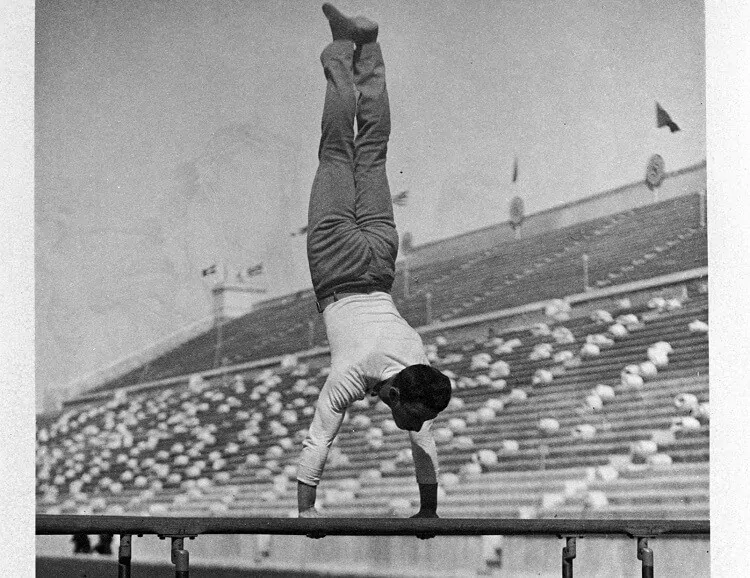- Origin: Late 1700s
- 02Inventor: Friedrich Ludwig Jahn
- 03Birthplace: Greece, Germany
- 04Styles: Artistic, Rhythmic, Aesthetic, Aerobic, Trampolining, and Tumbling
- 05Olympic Sport: Yes
- 06Association: Federation of International Gymnastics (FIG)
- 07Men’s Apparatus: Pommel Horse, Still Rings, Vault, Parallel Bars, and High Bar
- 08Women’s Apparatus: Vault, Uneven Bars, and Balance Beam
- 09Popularity: Over 3 Million Participants in the United States
- 10Famous Faces: Mary Lou Retton, Kerri Strug, and Gabby Douglas
Gymnastics Facts Infographics
Friedrich Ludwig Jahn Is Considered the Father of Modern Gymnastics
While the ancient Greeks practiced a form of gymnastics that included stretching, swimming, and running, gymnastics facts show that modern gymnastics began in the late 1700s. Friedrich Ludwig Jahn of Germany is generally considered the father of gymnastics as he invented several pieces of apparatus, including the parallel bars and the balance beam, which are both in use today. In 1811, Jahn created a school to spread the word about gymnastics. Around this time, Guts Muth introduced more rhythmic gymnastics in Sweden. Dr. Dudley Allen Sargent is credited with bringing this sport to the United States around the time of the Civil War.
Gymnastics Was at the 1st Olympics
Gymnastics facts indicate that the first modern Olympics, held in 1896, included a variation of men’s gymnastics, including rope climbing. The 1924 Olympic Games in Paris were the first to feature men’s gymnastics on apparatuses. Women’s gymnastics were finally included in the 1928 Olympic Games in Amsterdam, though it wasn’t until the 1960 games in Rome that the events we commonly see in the summer Olympic games were finalized.

